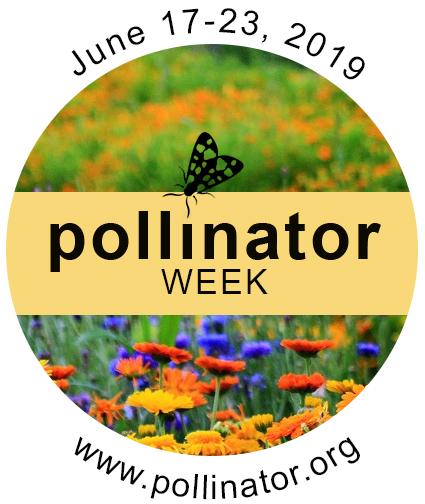Release Date: June 14, 2019
Contact: Donna Gilson, (608) 224-5130
Download PDF
 MADISON – National Pollinator Week June 17-23 is a great time to take a few steps that will make your yard a good home for the insects that are so vital to our food supply.
MADISON – National Pollinator Week June 17-23 is a great time to take a few steps that will make your yard a good home for the insects that are so vital to our food supply.
"If you have even a tiny lot in the middle of the city, you can help," says Brian Kuhn, director of the Wisconsin Department of Agriculture, Trade and Consumer Protection’s Plant Industry Bureau. “You can create an environment that provides nesting and feeding habitat, not just for honey bees, but for other insects that are just as important, or even more important, for pollinating our crops.”
Major commodity crops such as corn and soybeans don’t rely on insects for pollination, but our fruit crops do. Wisconsin leads the nation in cranberry production. Without pollinators, state cranberry growers would lose three-quarters of their crop. In 2017, that would have cost them $133 million. Apple growers would lose 80 percent of their crop, and cherry growers would lose 60 percent, without pollinators. In 2017, that would have added up to $22.3 million loss.
Many people think of honeybees when they think of pollinators, and they are important. But Wisconsin also is home to about 400 species of native bees, including about 20 species of bumblebees. One of those is the rusty patched bumble bee, which is on the federal endangered species list. Many of the native bees are small and most people would not recognize them as bees. Monarch butterflies and some native fly species also help pollinate crops.
Vegetable gardens, fruit trees and shrubs, flower gardens and even your lawn can all provide habitat for both honeybees and native pollinating insects.
Wisconsin's Pollinator Protection Plan offers tips for helping you help the pollinators in your yard:
Plants
- Choose plants that suit your soil, drainage, slope and sunlight. Try to have at least three species of flowers, herbs, fruits, vegetables, trees or shrubs blooming from early spring to late fall.
- Include native plants, which tend to attract and support more pollinators. Hybridized flowers, including common plants like petunias and impatiens, often have little nectar or pollen.
- Remove invasive plants and weeds that can take over. Pollinators need plant diversity.
- Let dandelions, clover and other flowers bloom in your lawn to provide pollen and nectar early in the season. Pollinators don’t visit common early bloomers like tulips and daffodils.
Nesting
- Leave some areas of your yard uncultivated and a little messy. Wild bees like to nest in old rodent burrows, tree cavities, abandoned bird nests, and downed logs.
- Before you destroy what looks like an anthill, check to see who is occupying it – it may be a bee nest.
Pesticides
- Remember, the label is the law. More is not better. Look for the "bee advisory box" on pesticides that pose a particular risk to pollinators.
- Mow your lawn to remove clover or dandelion blooms before applying pesticides.
- Wait until flowering plants have finished blooming before applying systemic pesticides that you apply to the soil around the plant.
- Before you use products to destroy pests or diseases, be sure you know what the pest is and whether it’s harmful. You may not need to use any treatment at all.
There are many online resources for gardeners and home owners, along with opportunities for them to become involved as citizen scientists. You can find web addresses and more detailed advice for making your yard a haven for pollinators in the Wisconsin Pollinator Protection Plan.
###
Find more DATCP news in our newsroom, and on Facebook, Twitter and Instagram.